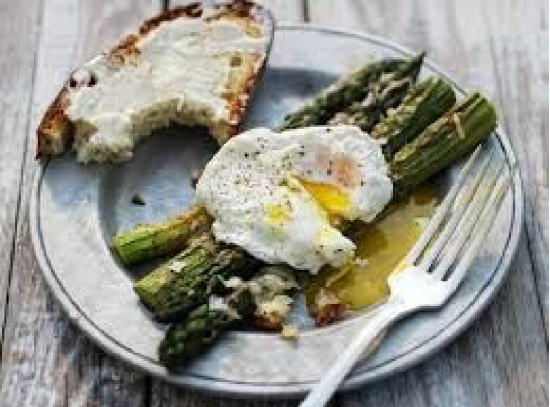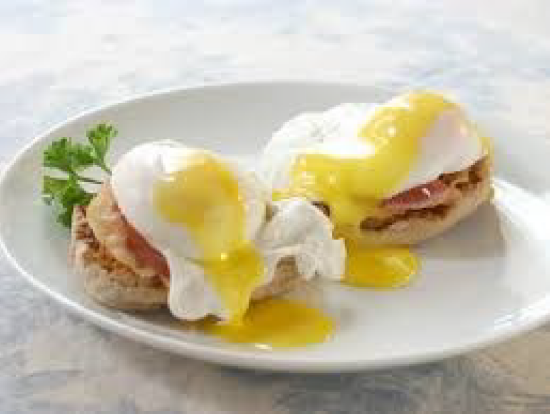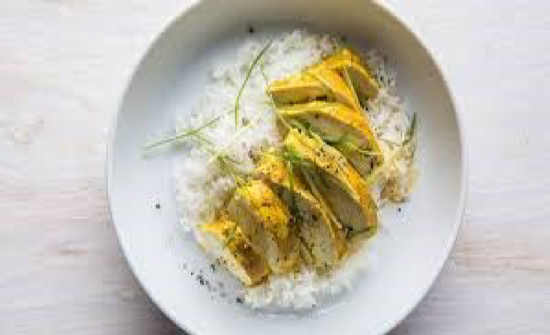7.2: The Cooking Techniques - Poaching
- Page ID
- 21858
\( \newcommand{\vecs}[1]{\overset { \scriptstyle \rightharpoonup} {\mathbf{#1}} } \)
\( \newcommand{\vecd}[1]{\overset{-\!-\!\rightharpoonup}{\vphantom{a}\smash {#1}}} \)
\( \newcommand{\id}{\mathrm{id}}\) \( \newcommand{\Span}{\mathrm{span}}\)
( \newcommand{\kernel}{\mathrm{null}\,}\) \( \newcommand{\range}{\mathrm{range}\,}\)
\( \newcommand{\RealPart}{\mathrm{Re}}\) \( \newcommand{\ImaginaryPart}{\mathrm{Im}}\)
\( \newcommand{\Argument}{\mathrm{Arg}}\) \( \newcommand{\norm}[1]{\| #1 \|}\)
\( \newcommand{\inner}[2]{\langle #1, #2 \rangle}\)
\( \newcommand{\Span}{\mathrm{span}}\)
\( \newcommand{\id}{\mathrm{id}}\)
\( \newcommand{\Span}{\mathrm{span}}\)
\( \newcommand{\kernel}{\mathrm{null}\,}\)
\( \newcommand{\range}{\mathrm{range}\,}\)
\( \newcommand{\RealPart}{\mathrm{Re}}\)
\( \newcommand{\ImaginaryPart}{\mathrm{Im}}\)
\( \newcommand{\Argument}{\mathrm{Arg}}\)
\( \newcommand{\norm}[1]{\| #1 \|}\)
\( \newcommand{\inner}[2]{\langle #1, #2 \rangle}\)
\( \newcommand{\Span}{\mathrm{span}}\) \( \newcommand{\AA}{\unicode[.8,0]{x212B}}\)
\( \newcommand{\vectorA}[1]{\vec{#1}} % arrow\)
\( \newcommand{\vectorAt}[1]{\vec{\text{#1}}} % arrow\)
\( \newcommand{\vectorB}[1]{\overset { \scriptstyle \rightharpoonup} {\mathbf{#1}} } \)
\( \newcommand{\vectorC}[1]{\textbf{#1}} \)
\( \newcommand{\vectorD}[1]{\overrightarrow{#1}} \)
\( \newcommand{\vectorDt}[1]{\overrightarrow{\text{#1}}} \)
\( \newcommand{\vectE}[1]{\overset{-\!-\!\rightharpoonup}{\vphantom{a}\smash{\mathbf {#1}}}} \)
\( \newcommand{\vecs}[1]{\overset { \scriptstyle \rightharpoonup} {\mathbf{#1}} } \)
\( \newcommand{\vecd}[1]{\overset{-\!-\!\rightharpoonup}{\vphantom{a}\smash {#1}}} \)
\(\newcommand{\avec}{\mathbf a}\) \(\newcommand{\bvec}{\mathbf b}\) \(\newcommand{\cvec}{\mathbf c}\) \(\newcommand{\dvec}{\mathbf d}\) \(\newcommand{\dtil}{\widetilde{\mathbf d}}\) \(\newcommand{\evec}{\mathbf e}\) \(\newcommand{\fvec}{\mathbf f}\) \(\newcommand{\nvec}{\mathbf n}\) \(\newcommand{\pvec}{\mathbf p}\) \(\newcommand{\qvec}{\mathbf q}\) \(\newcommand{\svec}{\mathbf s}\) \(\newcommand{\tvec}{\mathbf t}\) \(\newcommand{\uvec}{\mathbf u}\) \(\newcommand{\vvec}{\mathbf v}\) \(\newcommand{\wvec}{\mathbf w}\) \(\newcommand{\xvec}{\mathbf x}\) \(\newcommand{\yvec}{\mathbf y}\) \(\newcommand{\zvec}{\mathbf z}\) \(\newcommand{\rvec}{\mathbf r}\) \(\newcommand{\mvec}{\mathbf m}\) \(\newcommand{\zerovec}{\mathbf 0}\) \(\newcommand{\onevec}{\mathbf 1}\) \(\newcommand{\real}{\mathbb R}\) \(\newcommand{\twovec}[2]{\left[\begin{array}{r}#1 \\ #2 \end{array}\right]}\) \(\newcommand{\ctwovec}[2]{\left[\begin{array}{c}#1 \\ #2 \end{array}\right]}\) \(\newcommand{\threevec}[3]{\left[\begin{array}{r}#1 \\ #2 \\ #3 \end{array}\right]}\) \(\newcommand{\cthreevec}[3]{\left[\begin{array}{c}#1 \\ #2 \\ #3 \end{array}\right]}\) \(\newcommand{\fourvec}[4]{\left[\begin{array}{r}#1 \\ #2 \\ #3 \\ #4 \end{array}\right]}\) \(\newcommand{\cfourvec}[4]{\left[\begin{array}{c}#1 \\ #2 \\ #3 \\ #4 \end{array}\right]}\) \(\newcommand{\fivevec}[5]{\left[\begin{array}{r}#1 \\ #2 \\ #3 \\ #4 \\ #5 \\ \end{array}\right]}\) \(\newcommand{\cfivevec}[5]{\left[\begin{array}{c}#1 \\ #2 \\ #3 \\ #4 \\ #5 \\ \end{array}\right]}\) \(\newcommand{\mattwo}[4]{\left[\begin{array}{rr}#1 \amp #2 \\ #3 \amp #4 \\ \end{array}\right]}\) \(\newcommand{\laspan}[1]{\text{Span}\{#1\}}\) \(\newcommand{\bcal}{\cal B}\) \(\newcommand{\ccal}{\cal C}\) \(\newcommand{\scal}{\cal S}\) \(\newcommand{\wcal}{\cal W}\) \(\newcommand{\ecal}{\cal E}\) \(\newcommand{\coords}[2]{\left\{#1\right\}_{#2}}\) \(\newcommand{\gray}[1]{\color{gray}{#1}}\) \(\newcommand{\lgray}[1]{\color{lightgray}{#1}}\) \(\newcommand{\rank}{\operatorname{rank}}\) \(\newcommand{\row}{\text{Row}}\) \(\newcommand{\col}{\text{Col}}\) \(\renewcommand{\row}{\text{Row}}\) \(\newcommand{\nul}{\text{Nul}}\) \(\newcommand{\var}{\text{Var}}\) \(\newcommand{\corr}{\text{corr}}\) \(\newcommand{\len}[1]{\left|#1\right|}\) \(\newcommand{\bbar}{\overline{\bvec}}\) \(\newcommand{\bhat}{\widehat{\bvec}}\) \(\newcommand{\bperp}{\bvec^\perp}\) \(\newcommand{\xhat}{\widehat{\xvec}}\) \(\newcommand{\vhat}{\widehat{\vvec}}\) \(\newcommand{\uhat}{\widehat{\uvec}}\) \(\newcommand{\what}{\widehat{\wvec}}\) \(\newcommand{\Sighat}{\widehat{\Sigma}}\) \(\newcommand{\lt}{<}\) \(\newcommand{\gt}{>}\) \(\newcommand{\amp}{&}\) \(\definecolor{fillinmathshade}{gray}{0.9}\)Poaching is a Moist Heat Cooking Method
Have you ever poached an egg to make Eggs Benedict? Poached pears in wine for dessert? Delicately cooked a fish covered with water, stock or wine (poaching liquids) in a covered pan to preserve the moistness of the meat? These are examples of poaching you are probably familiar with.
It is the method accomplished with the least amount of heat, and, therefore is a gradual, gentle cooking process. Poaching is best for very delicate foods, such as eggs, fish, white meat chicken and fruit. It is a very healthy cooking method, because liquid—not fat—carries the heat into the food.
Poaching is ideally done at temperatures between 160°F and 190°F, or well below a simmer. The best way to tell if a poaching liquid is at the correct temperature is with an instant read thermometer. Short of that, look at the liquid in the pan. There should be a slight convective current in the liquid, as the warmer liquid rises to the surface. The liquid should be gently moving, but it should not be bubbling at all.
Poaching is Patience
Poaching takes patience. Poaching allows the proteins in foods to uncoil, or denature, slowly, without squeezing out moisture. If you were to drop a delicate chicken breast into boiling water, the proteins would seize up so quickly that all the moisture would be squeezed out, and you would end up with a small piece of dry rubber!
Poaching Liquids
You can poach in water, milk or a flavorful broth. The broth used in poaching is called a court bouillon. It consists of the poaching liquid itself (often broth or stock) an acid (wine, lemon juice, or vinegar), a bouquet garni (a small bundle of aromatics tied up in cheesecloth, or just tied together with kitchen string (bay leaf, parsley, peppercorns, garlic, thyme, etc) and mirepoix (onion, celery and carrot. Traditional proportions for a white mirepoix is two parts onion to one part each celery and carrot). You can also poach in fats such as clarified butter, duck fat or olive oil. A raw, shelled, lobster tail poached in clarified butter or olive oil is a thing to behold.
For dessert preparations, fruit is often poached in sweet wine and water with some spices (star anise, clove, cinnamon, and so forth). Eggs are generally poached in water with a bit of vinegar. The acid in the poaching liquid helps to speed up the protein coagulation on the outside of the food. This helps hold delicate foods together during the poaching process (think eggs).
To poach a chicken breast: Bring 2 inches of poaching liquid to just below a simmer. You will know when you get there when there are lots of little bubbles all over the bottom of the pan, but no bubbles have started to rise to the top.
Place the chicken breast into the liquid. Keep an eye on the heat. If it starts bubbling, turn it down. If you do not see any convective currents, turn the heat up a little. Do not worry if the chicken breast is not completely submerged. You can use some tongs to turn it over. If totally submerged and you used an ovenproof pan, you may want to insure constant, all around heat by placing pan in a 325-degree oven.
Continue poaching until the internal temperature of the chicken breast has reached 160 degrees, F. Many books talk to you about pushing on the chicken or even cutting into it to see if it’s done. The most accurate method, though, is using an accurate instant read thermometer.
Take the piece of chicken out of the poaching liquid. It will be very pale in color. In a moist heat environment and at such low temperatures, there is no browning. You will also lose the deep flavor that some browning imparts. What you lose in flavor though is made up for in moisture.
Poaching is a wonderful way to keep delicate foods moist and plump. Then, there is the added advantage of turning the poaching liquid into a sauce by reducing a part of the poaching liquid, thicken with beurre manie, or monte au beurre or adding a spot of cream. A small amount of rich sauce can greatly enhance the dish.
As you can see from the above procedure, no special equipment is needed for poaching. A sauté pan or even just a saucepan will suffice. As long as your pan can hold two or three inches of liquid, you are good to go. They do sell a special pan for poaching whole fish and I am sure you can poach just about anything in it that fits.
How to Poach an Egg
Many a cook has been frustrated by the seemingly simple and straightforward task of poaching an egg. Most egg poaching disasters can be averted by keeping the water below a simmer.
- Bring 3 inches of water and a splash of vinegar to about 170 degrees, F. Look carefully at the bottom of the pan. There should be small bubbles all over it, but they should not be rising to the top and breaking.
- Crack an egg into a small cup.
- Stir the water in a circular motion to get the water moving. Lower the egg into the water in the center of the pan. Tip the cup to let the egg slide out gently.
- If any errant strings of white try to swirl away from the egg, gently push them back with a heat-resistant spatula or a spoon.
- Let the egg gently poach for about 4-5 minutes, depending on how done you like your eggs. “Jiggle” the egg with your spoon. The white should be fairly firm, but the yolk should still shimmy. Remove the egg with a slotted spoon, and let it drain on some paper towels, or place in ice water for later service. Just bring water to poaching temperature and warm the egg for 40 seconds.
- Serve on buttered toast, or get fancy and make Eggs Benedict. A lovely way to serve a poached egg at dinner is to make a salad with an acidic dressing. Perch the warm poached egg atop the salad and break the yolk. The rich yolk will blend with and become part of the dressing. Wonderful! (Research “Salade Lyonaise”…a great salad to serve as dinner. Just add some good crusty bread and a good white wine! Yum!)

Poached egg over roasted asparagus. Foodandwine.com

Eggs Benedict. whatsforeats.com

Curry-Poached Chicken over Basmati. Bonappetit.com


